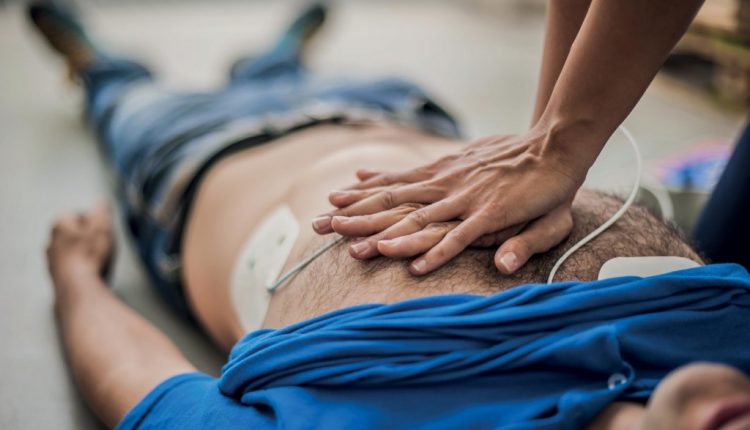
CPR Induced Consciousness, An Important Phenomenon to be Aware Of
Consciousness induced by CPR, cardiopulmonary resuscitation, is a phenomenon of which the rescuer must be aware and which raises questions about the procedures to be followed
ECG EQUIPMENT? VISIT THE ZOLL BOOTH AT EMERGENCY EXPO
CPR-induced consciousness: how to deal with a patient who makes intentional movements?
Following a cardiopulmonary resuscitation manoeuvre, the unconscious patient may become aware and make intentional movements.
These movements, probably conditioned by the anxiety and bewilderment of the patient being assisted, may hinder rescue operations, or even damage medical devices, such as the endotracheal tube or intravenous needle.
During these resuscitation operations, the ambulance crew is therefore called upon to question this regaining of consciousness, and to take preventive measures to protect the patient and the rescue operation in progress.
Is it therefore necessary to physically restrain the patient?
Consciousness induced by CPR is a rare phenomenon, of which it is important to be aware
With high quality compressions, sufficient cerebral blood flow can theoretically be produced to induce various states of consciousness.
This may be manifested by spontaneous eye opening, newfound jaw tone, speech or spontaneous movements of the body and extremities.1,2
The incidence of this regained consciousness was approximated at 0.7% in a pre-hospital registry study completed in 2014.2
It has also been observed that CPR-induced consciousness is associated with improved survival and that the number of recorded cases increased over the six-year study period.
Currently, the management of CPR-induced consciousness is not well defined
Reports document interventions ranging from no intervention, verbal instructions, physical restraint, chemical restraint (including ketamine, benzodiazepines, opioids, muscle relaxants) or a combination of strategies.1-3
To date, a limited sample of patients has undergone resuscitation intervention. 1-3
To date, the limited sample size in the only large-scale observational study precluded any significant association between choice of chemical agent and survival outcomes.
However, from a practical point of view, particular care must be taken before using opioids or benzodiazepines, given their potential ability to induce hypotension.
Similarly, paralysers carry the risk of ‘paralysis while conscious’, which warrants further medical-ethical consideration.
In 2016, a letter from the Nebraska EMS Office shared the prehospital protocol for CPR-induced consciousness
The protocol was initiated following an increase in reported cases, apparently after the introduction of prehospital mechanical CPR.
The protocol states that the first-line therapy is a mix of ketamine IV or IM with possible co-administration of midazolam IV or IM.3
Further research is needed to assess the best drug regimen.
References
Olaussen A, Shepherd M, Nehme Z, et al. Return of consciousness during ongoing cardiopulmonary resuscitation: A systematic review. Resuscitation. Jan 2015;86:44-48.
Olaussen A, Nehme Z, Shepherd M, et al. Induced consciousness during cardiopulmonary resuscitation: An observational study. Resuscitation. Apr. 2017;113:44-50.
Rice DT, Nudell NG, Habrat DA, et al. CPR-induced consciousness: Time for sedation protocols for this growing population. Resuscitation. Jun 2016;103:e15-e16.
Read Also:
Emergency Live Even More…Live: Download The New Free App Of Your Newspaper For IOS And Android
Defibrillator: What It Is, How It Works, Price, Voltage, Manual And External
Proper Defibrillator Maintenance To Ensure Maximum Efficiency
Electrical Injuries: How To Assess Them, What To Do
Study In European Heart Journal: Drones Faster Than Ambulances At Delivering Defibrillators
RICE Treatment For Soft Tissue Injuries
How To Carry Out Primary Survey Using The DRABC In First Aid
Heimlich Maneuver: Find Out What It Is And How To Do It
4 Safety Tips To Prevent Electrocution In The Workplace
Manual Ventilation, 5 Things To Keep In Mind
Anxiolytics And Sedatives: Role, Function And Management With Intubation And Mechanical Ventilation
FDA Approves Recarbio To Treat Hospital-Acquired And Ventilator-Associated Bacterial Pneumonia
Pulmonary Ventilation In Ambulances: Increasing Patient Stay Times, Essential Excellence Responses
Ambu Bag: Characteristics And How To Use The Self-Expanding Balloon
AMBU: The Impact Of Mechanical Ventilation On The Effectiveness Of CPR
Mechanical Or Artificial Ventilation: The Different Types And Indications For Use


